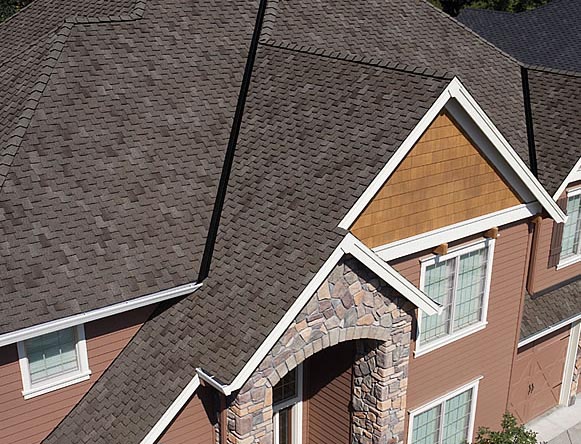Finest Practices for Ensuring Correct Roof Covering Air Flow
A balanced intake and exhaust air vent ratio, typically 1:300, plays a crucial role, with consumption vents ideally positioned at the reduced edge of the roof covering for amazing air entrance and exhaust vents at the top for cozy air leave. Keeping insulation away from vents is crucial to stop airflow restriction.
Understand Air Flow Essentials
Properly understanding ventilation fundamentals is important for guaranteeing the durability and efficiency of roof. Efficient ventilation reduces dampness accumulation and temperature extremes in the attic room, both of which can bring about significant architectural damage gradually. A well-ventilated roof covering assists in preventing common concerns such as mold growth, wood rot, and ice dams, which can jeopardize the integrity of the roofing products and the underlying structures.
The main objective of ventilation is to assist in the activity of air, permitting a regular exchange between the indoor and outside atmospheres. This balance is attained through a combination of consumption and exhaust vents that collaborate to keep ideal airflow. Consumption vents, typically situated along the eaves or soffits, permit fresh air to go into the attic space, while exhaust vents, usually positioned at or near the roof covering ridge, allow warm, damp air to leave.
Secret variables affecting the efficiency of roofing system air flow include proper positioning, sufficient sizing, and ensuring that both intake and exhaust vents are unhampered. Routine evaluation and upkeep are important to identify possible blockages, damages, or ineffectiveness in the air flow system, therefore guarding the roofing system's efficiency and durability.
Sorts Of Roofing System Vents
Roof covering vents play a crucial duty in maintaining efficient attic ventilation and, by extension, the general wellness of the roof covering system. Various types of roof covering vents are offered, each with unique benefits customized to certain roof covering needs.

Soffit vents are installed under the eaves and work in tandem with roofing system vents to guarantee a balanced consumption and exhaust system. By enabling cooler air to get in from below, soffit vents assist in the expulsion of hot air with top vents. Gable vents, located on the outside wall surfaces of the attic, offer one more effective option, particularly in homes with gable roof coverings.
Assess Your Current Ventilation

Following, consider the age and condition of your roof materials and ventilation parts. Older systems might not abide by current building regulations or might have deteriorated with time, minimizing their efficiency. Conduct a complete examination to recognize any type of indications of deterioration, such as rust, damage, or spaces that can jeopardize the system's efficiency.
Furthermore, measure the attic temperature and humidity degrees. Heats and see here now moisture can indicate insufficient ventilation - roofing companies in gainesville florida. Use a hygrometer and thermometer to obtain precise analyses, contrasting them with outside conditions. Consistent inconsistencies recommend potential issues that require dealing with.
Installment Best Practices
Effective installation of roof air flow systems is paramount for making sure ideal performance and durability. Appropriate installation begins with recognizing the specific ventilation needs of the roofing and the structure it covers. This includes determining the right proportion of intake to wear down vents, normally adhering to the 1:300 regulation, which specifies one square foot of ventilation for every 300 square feet of attic room flooring space.

Consumption vents must be set up at the roof's lower edge, often in the soffits, to allow amazing air to enter. Exhaust vents, on the various other hand, should be installed near or at the roofing system's top to assist in the departure of cozy, damp air.
Seal all vent connections thoroughly to avoid air leakages and possible water infiltration. Use top quality products and follow producer guidelines to guarantee toughness and efficiency. In addition, incorporating ridge vents with baffles can considerably enhance airflow performance by stopping wind-driven rain and snow from getting in the attic.
Ultimately, specific setup of roof air discover this flow systems minimizes possible issues such as mold development, ice dams, and structural damages, guaranteeing the roof's integrity and the building's total wellness.
Routine Maintenance Tips
Uniformity in maintenance methods is fundamental to ensuring the long-term performance of roof ventilation systems. Normal examinations are essential, preferably done biannually-- in the spring and fall. During these inspections, make certain that vents are devoid of debris, nests, and other blockages that might restrain air visit their website flow. Examine for any kind of indications of wetness accumulation or mold and mildew, as these can suggest inappropriate ventilation or leakages (roofing companies gainesville florida).
Make use of a soft brush or a vacuum to get rid of dust and debris from intake and exhaust vents. Be cautious not to damage the vent screens or louvers during the procedure.
Appropriate insulation is similarly essential. Make certain that attic insulation does not block the vents, as this can badly restrict airflow. Reposition or change it to preserve an effective obstacle. if any insulation has shifted or worked out.
Last but not least, change any type of harmed or missing parts immediately. Broken vents, cracked roof shingles, or deteriorated blinking can all add to poor ventilation and needs to be resolved immediately. Regular maintenance ensures that the roof covering air flow system functions optimally, thereby extending the lifespan of the roofing itself.
Verdict
Guaranteeing appropriate roofing ventilation is critical for keeping the efficiency and sturdiness of a roof covering system. Adherence to the 1:300 consumption and exhaust vent ratio, coupled with the strategic placement of vents, is vital.
A balanced intake and exhaust vent ratio, generally 1:300, plays a pivotal role, with intake vents ideally positioned at the lower side of the roofing system for trendy air access and exhaust vents at the optimal for warm air departure. Consumption vents, normally situated along the eaves or soffits, allow fresh air to go into the attic space, while exhaust vents, commonly situated at or near the roof covering ridge, make it possible for hot, moist air to run away.
Soffit vents are set up under the eaves and job in tandem with roof vents to make certain a balanced consumption and exhaust system. By enabling cooler air to enter from below, soffit vents promote the expulsion of warm air with top vents. Adherence to the 1:300 intake and exhaust air vent ratio, coupled with the critical placement of vents, is crucial.
Comments on “Comparing Costs Amongst Roofing Companies in Gainesville Florida”